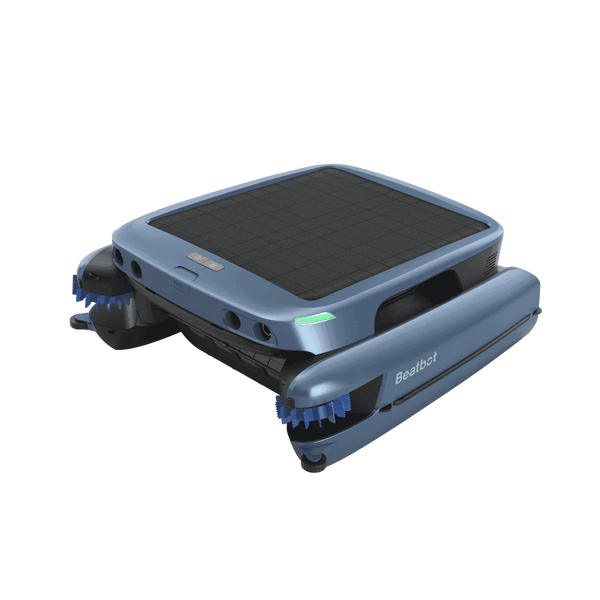Understanding Inground Pool Repair: A Comprehensive Guide
2024-05-03
Inground pools, encompassing concrete, vinyl liner, and fiberglass types, each require specialized repair strategies to maintain their integrity and aesthetics. This is a definitive guide on repairing concrete, vinyl, and fiberglass swimming pools, along with expert insights and tailored solutions for repair and maintenance.

Table of content
Concrete Pool Management
It is vital that you monitor your concrete pool for cracks. Determining their size and depth will help you choose the proper solution. Next, determine this, and you will know which way to go with a repair. For a small crack, a good polyurethane sealant will be your best friend: inject directly into the crack, and you will have a waterproof seal. But if the cracks are wider or cause structural compromise, don't hesitate to call the professionals. They are going to use hydraulic cement & likely rebar to reinforce the pool and then apply a patching compound to bring back the surface.
And what about the surface of the pool? At some point, you may want to give it a face-lift. Use either plaster, colored quartz, or pebble finishes; after that, clear off algae, stains, and garbage by pressure cleaning. Spread the new surface material and allow it to cure before adding water back to the pool. It helps to update the appearance of your pool but also makes it strong enough to provide a long lasting of fun for many years.
Vinyl Pool Maintenance
Firstly, punctures are a fact of life. Kind of similar to like getting a small tear in your favorite shirt — aggravating, but repairable. To combat this, begin by checking your pool for rips in the liner or holes. If you see one, clean the area around the tear with a mild detergent and water and remove dirt or grime. Then, cut a larger patch of vinyl to cover the tear. Apply vinyl glue made for underwater repairs and bond the patch to the inside over the damaged area. Follow the drying or curing time as instructed on the adhesive to improve bonding.
OK, now that we've discussed how to keep your liner from ruining, We can liken this to looking after your skin, maintaining cleanliness and balance. Ensure water quality by consistently checking pH levels and chlorine in your pool. A balanced pH (between 7.2 and 7.6) allows the chlorine to disinfect the water and prevent algae from growing. Regularly inspect for signs of wear and tear. Cleaning the liner on a regular basis not only helps it maintain its fresh appearance, it also decreases the likelihood of tears forming due to debris which is left on the liner. You could think of it as a spa day for your pool; it allows your pool to unwind and keep its figure longer.
Fiberglass Pool Upkeep
Fiberglass pools are not immune to cracking, but there is some good news: cracks are usually treatable. The first step in assessing a crack is determining whether it only penetrates the surface of the fiberglass or if it goes deeper. Fixing surface cracks is generally easier than fixing deeper cracks. Beginning the fix, sand the crack area to deliver a clean, rough surface. It assists the bonding process for the repair material. Then, follow the ratios given by your manufacturer to mix the resin and hardener. Spread the mixture onto the crack and smooth it out. Do not start using the pool again until the resin has fully cured. When it's dried, just sand the patch until it looks smooth and blends with the rest of the surface.
The gel coat, which is the clear, protective, and glossy exterior covering over your fiberglass pool, is very important in terms of looks and protection. It can dull or discolor over time. To renew, begin by giving the pool surface a thorough wash to remove any debris. Sand the entire surface very lightly to help the new gelcoat stick. Mix the gel coat according to the instructions provided by the manufacturer and apply it with a roller or spray gun to obtain an even layer. Give the gel coat enough time to properly cure it. You may also polish the surface for additional luster and smoothness.

Leak Detection
Regular Monitoring
In order to prevent water evaporation, you have to monitor your pool water level. If you see a steady fall in your water level that cannot be explained by evaporation, there is a good chance you have a leak. You can use the bucket test to tell evaporation apart from a leak. But place a bucket on a pool step, fill it with water to the same level as the pool, and mark the water level in both the pool and bucket. Then, after 24 hours, check the levels of liquid. If the water level in your pool has dropped more than in the bucket, you’re probably leaking somewhere.
Dye Testing
Dye testing is one of the best ways to locate leaks. This method serves multiple pool types effectively. You'll require a leak detection dye kit, generally available in a kit that contains a dropper. It starts with shutting down your pool pump and watching the water for bubbles near your fixtures, jets or other frequent leak locations. If bubbles will form, then you want to do your dye test there. Gently squeeze a few drops of dye into the water around the area you suspect might be leaking. If they’re leaking, a colored liquid or dye will be drawn toward them, helping you pinpoint the exact location of any leaks.
Seasonal Adjustments
Lowering Water Levels
Begin by draining the water from your pool. Why is this so important, well as many of you may know, water expands when it freezes, the water level being too high can cause damage not only to your pool's structure but also to your pool's equipment. Reduce the level to about 4 to 6 inches below the skimmer opening. This keeps the water from freezing so that it doesn’t crack your skimmer or other components.
Protecting Your Equipment
After that comes securing your pool equipment. If You Have a Pool: Disconnect and empty all the water from your pump, heater and filter system. This keeps water from freezing inside the equipment, which results in cracks and damage. Blow out the plumbing lines with a shop vacuum or air compressor. Keep the equipment in a dry, sheltered place to avoid exposure to moisture and extreme temperatures.
Applying a Quality Cover
The top time of the year for your pool to be contaminated is usually in winter, and a solid quality pool cover is a top guard against debris and whether conditions. Ensure that the cover covers tightly over the pool so that leaves, dirt and snow do not get in. A winter cover is specifically made to be heavier and protects more against the elements than a regular cover. Make sure to cinch the cover tight to keep the lid from blowing off or allowing debris into the pool.
Balancing Chemicals
Ensure balanced water chemistry before covering the pool. This involves getting the water tested for pH, alkalinity and calcium hardness and adjusting as per requirement. Winter Season- Add a winterizing chemical kit to help balance the water in the tank and help prevent algae growth. This step ensures that when you reopen your pool in the spring, the water is in good condition and requires minimal further treatment.

When to Choose DIY vs. Professional
Small maintenance jobs, like changing filters or replacing minor parts, can often be handled yourself if you feel confident enough. These jobs are simple, require only basic tools, and will save you money while giving you a sense of accomplishment.
Further issues like cracked housing, damaged internal components, or persistent problems are best left to the experts. They have the right tools and the know-how to safely and effectively diagnose and repair these problems, so you can be assured your pool is always in good shape.
Relative Blogs
About the author



















